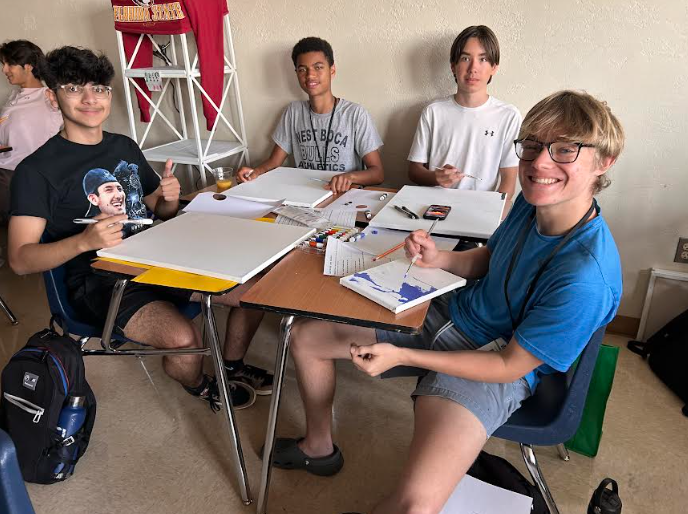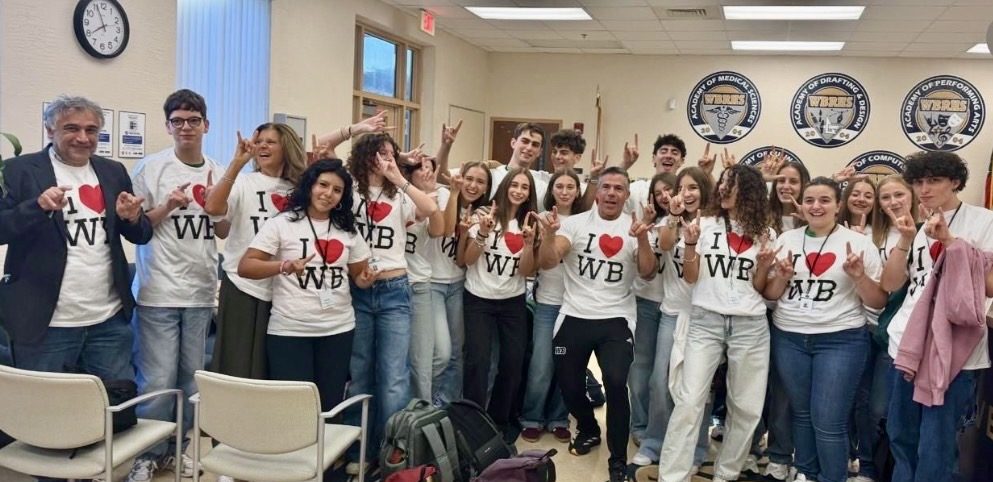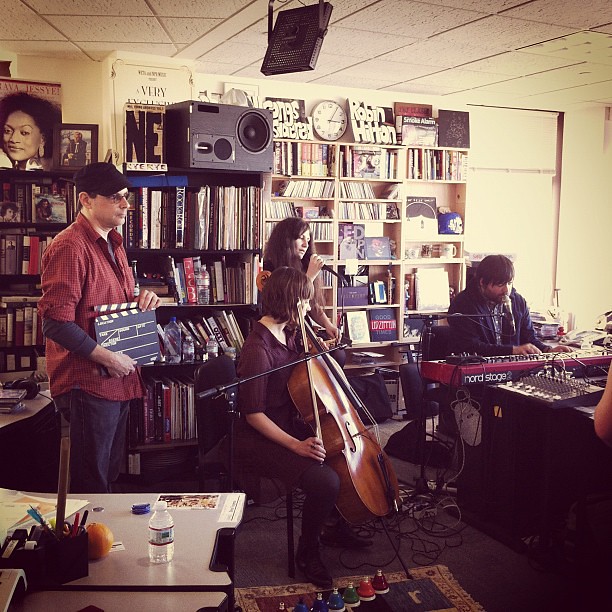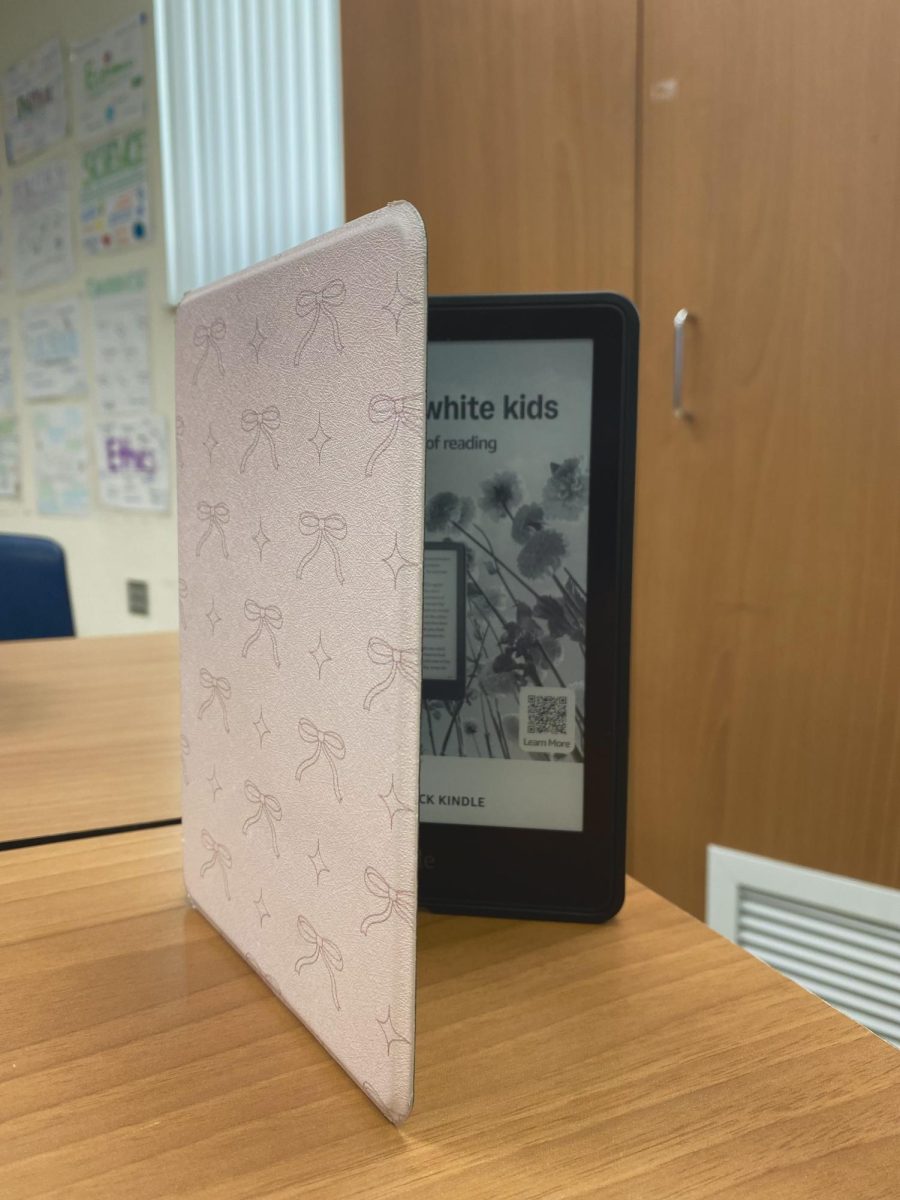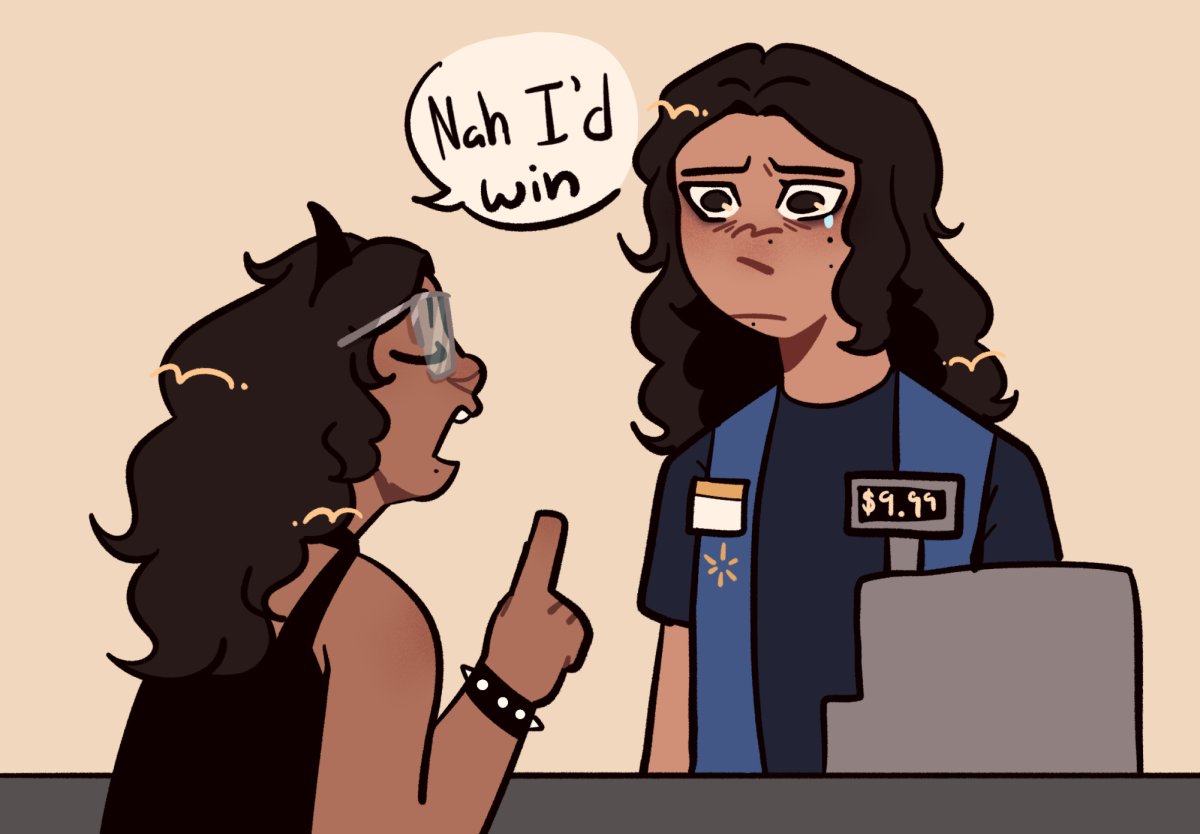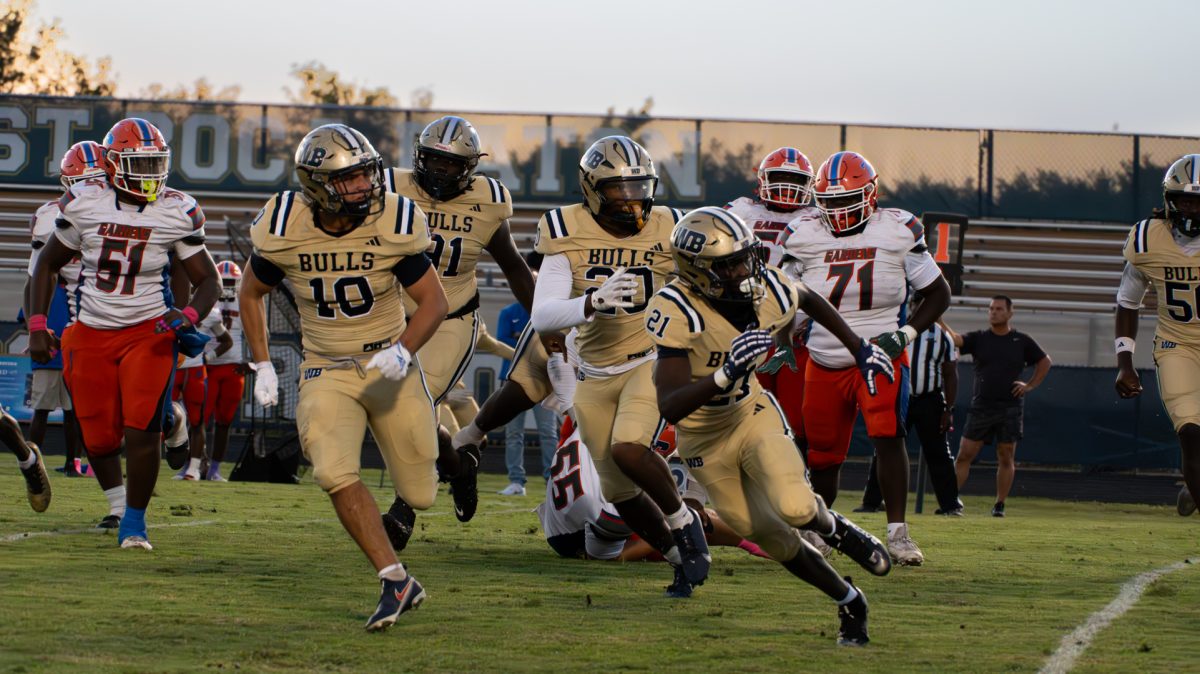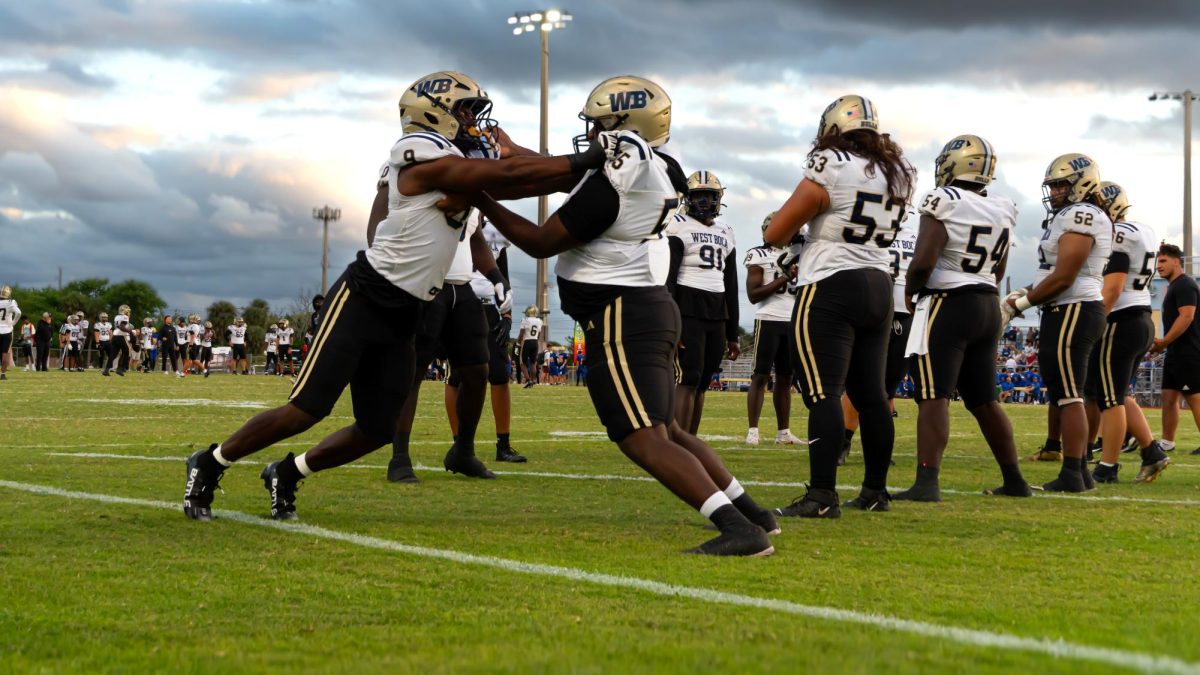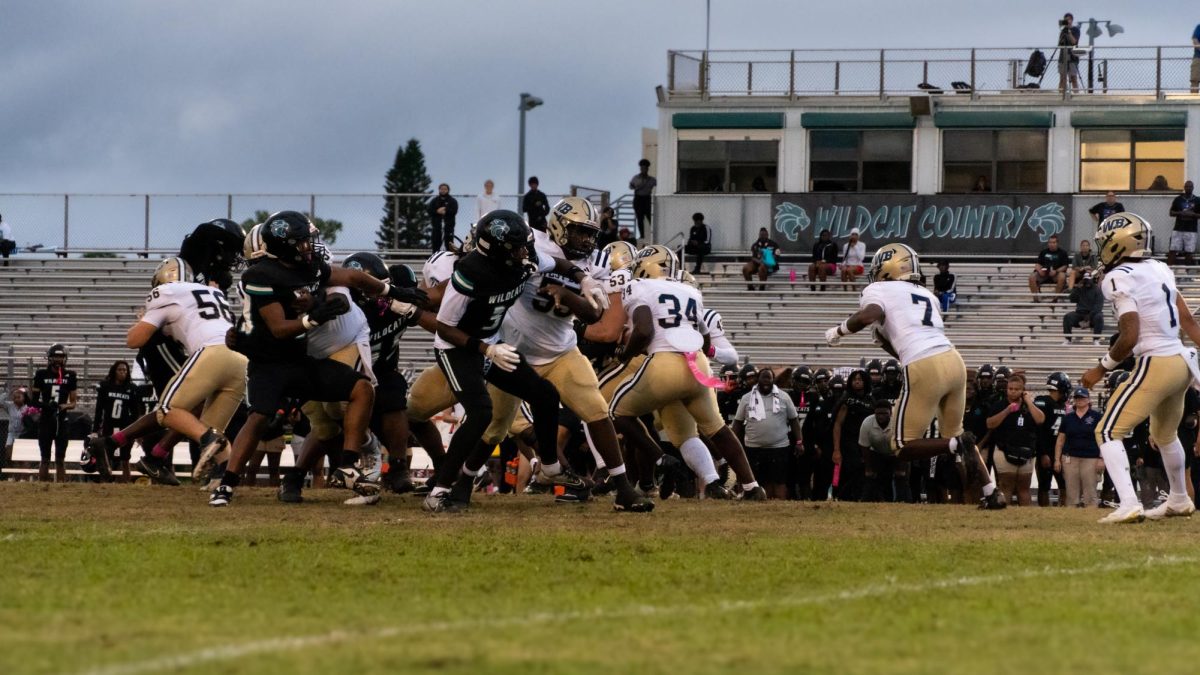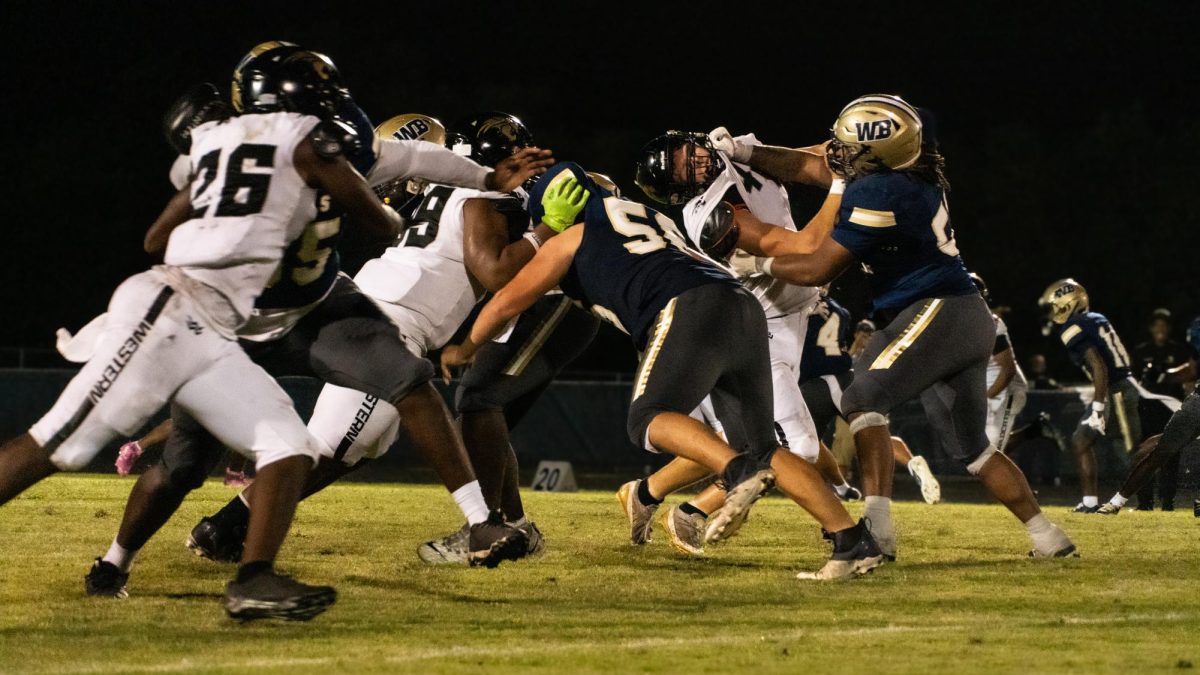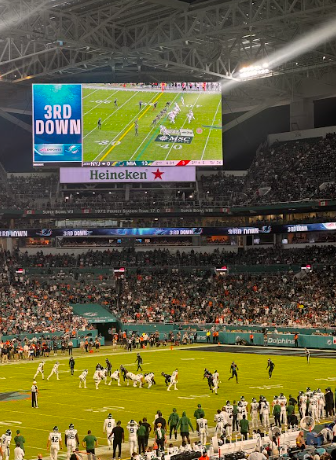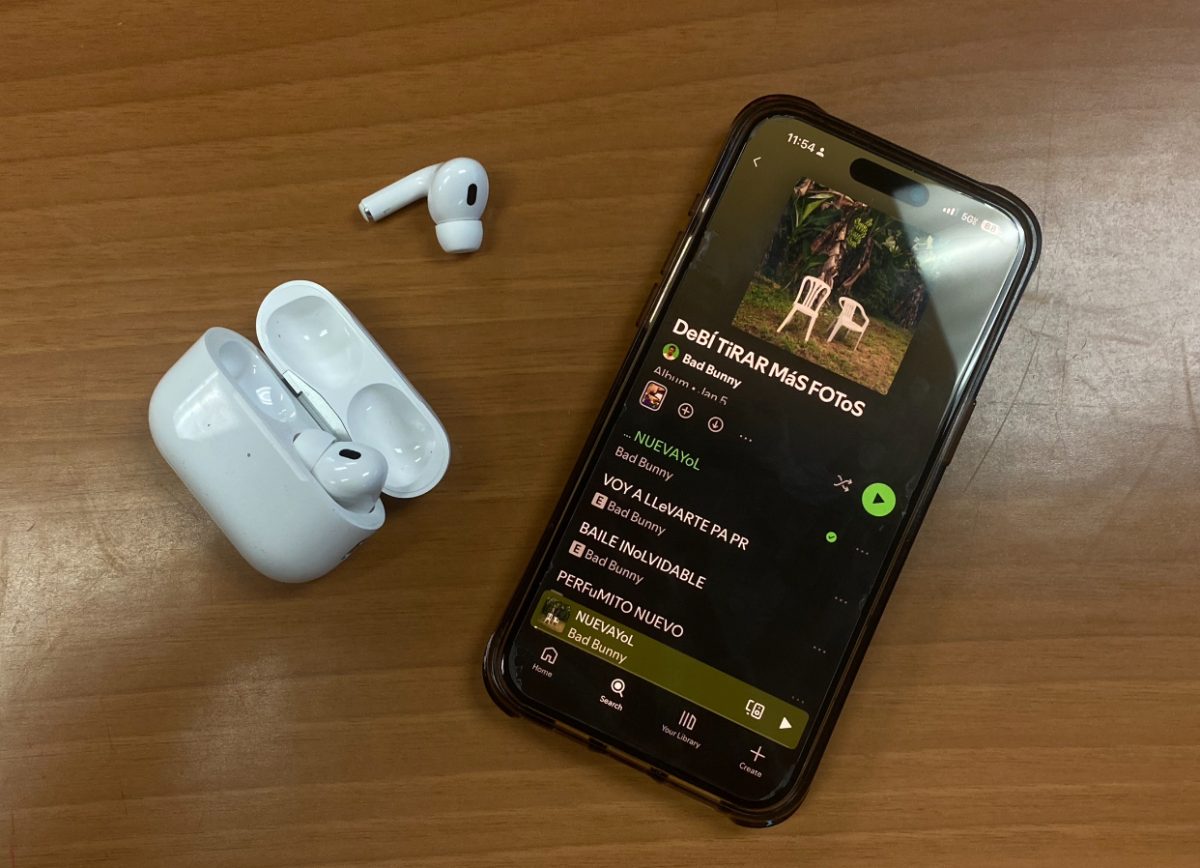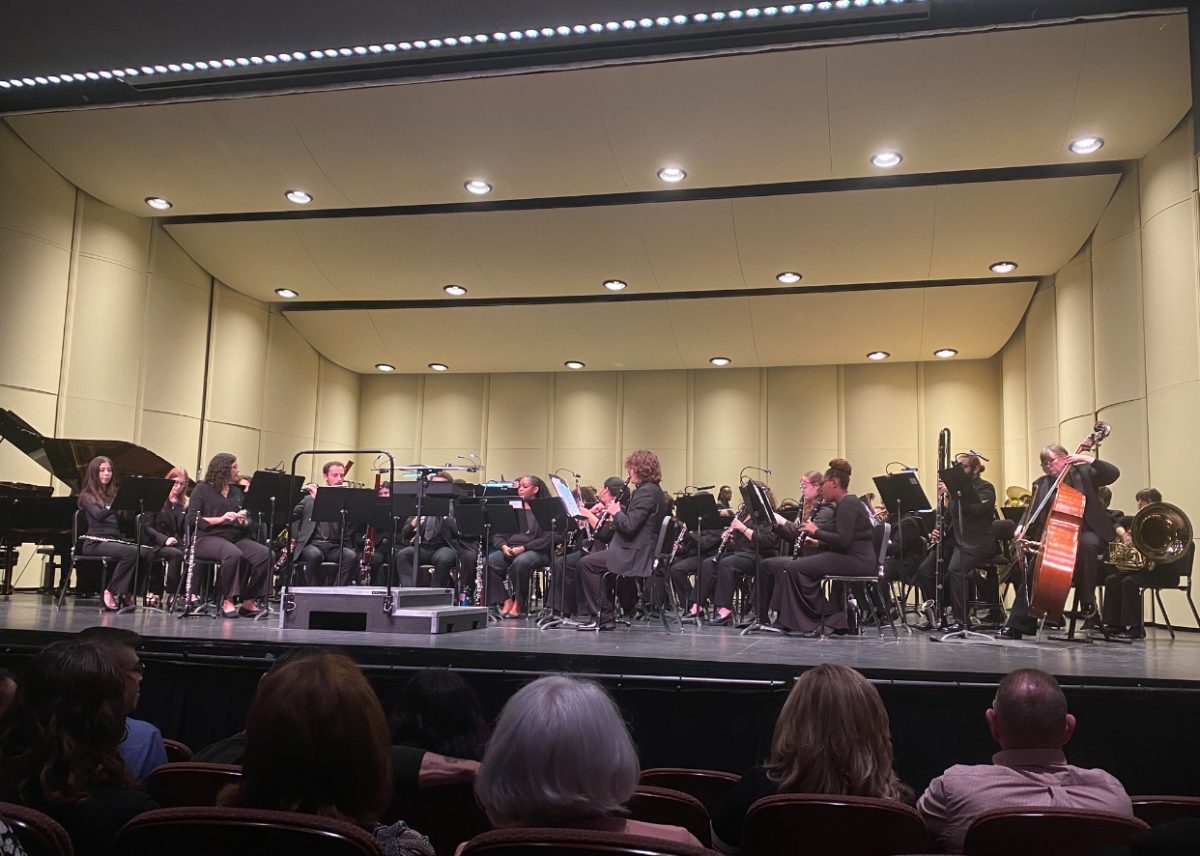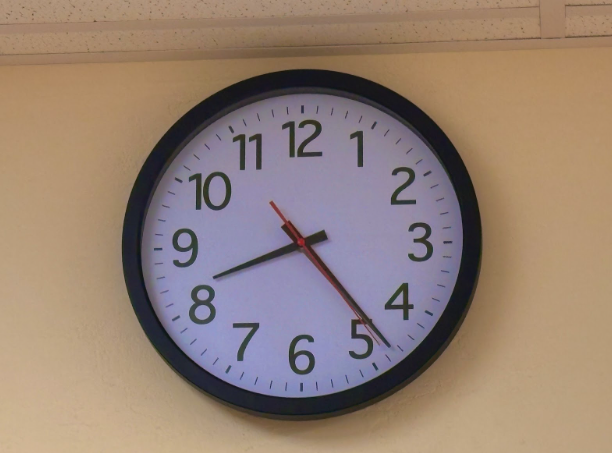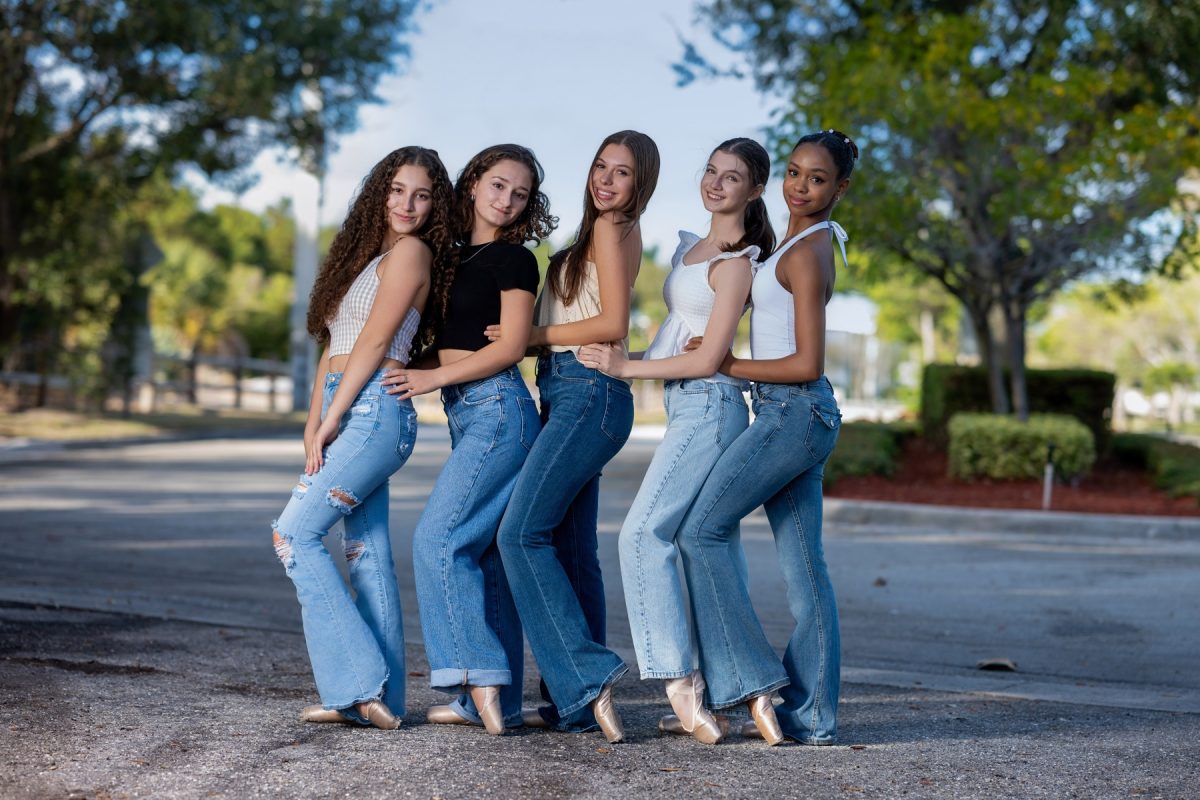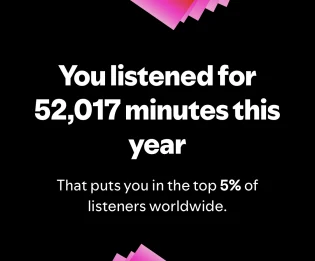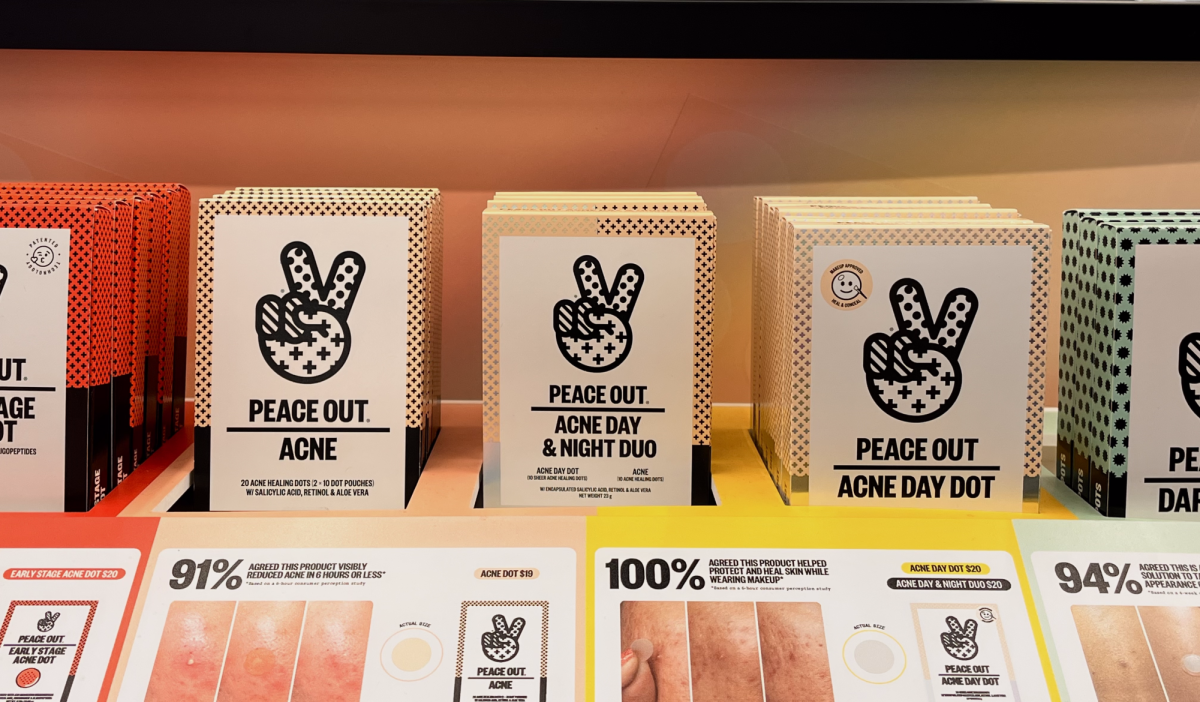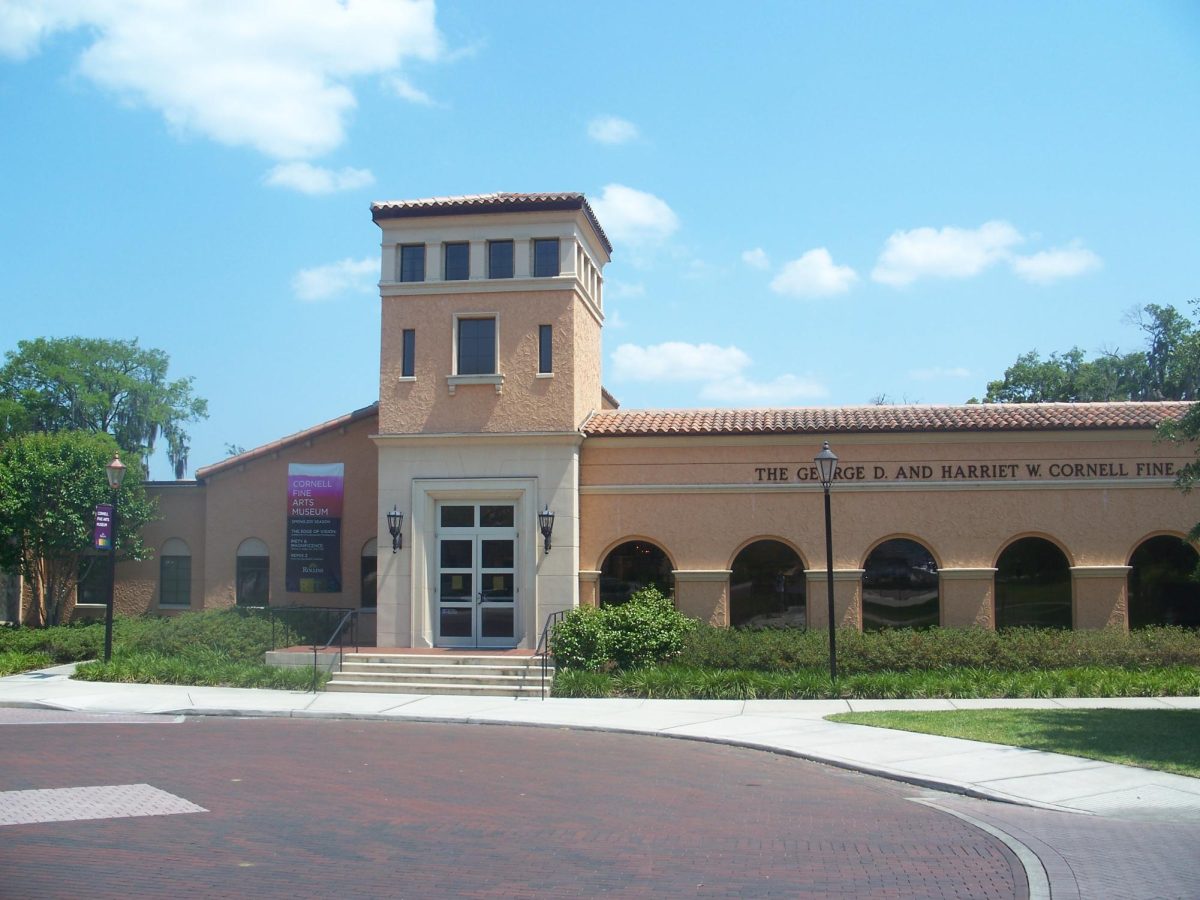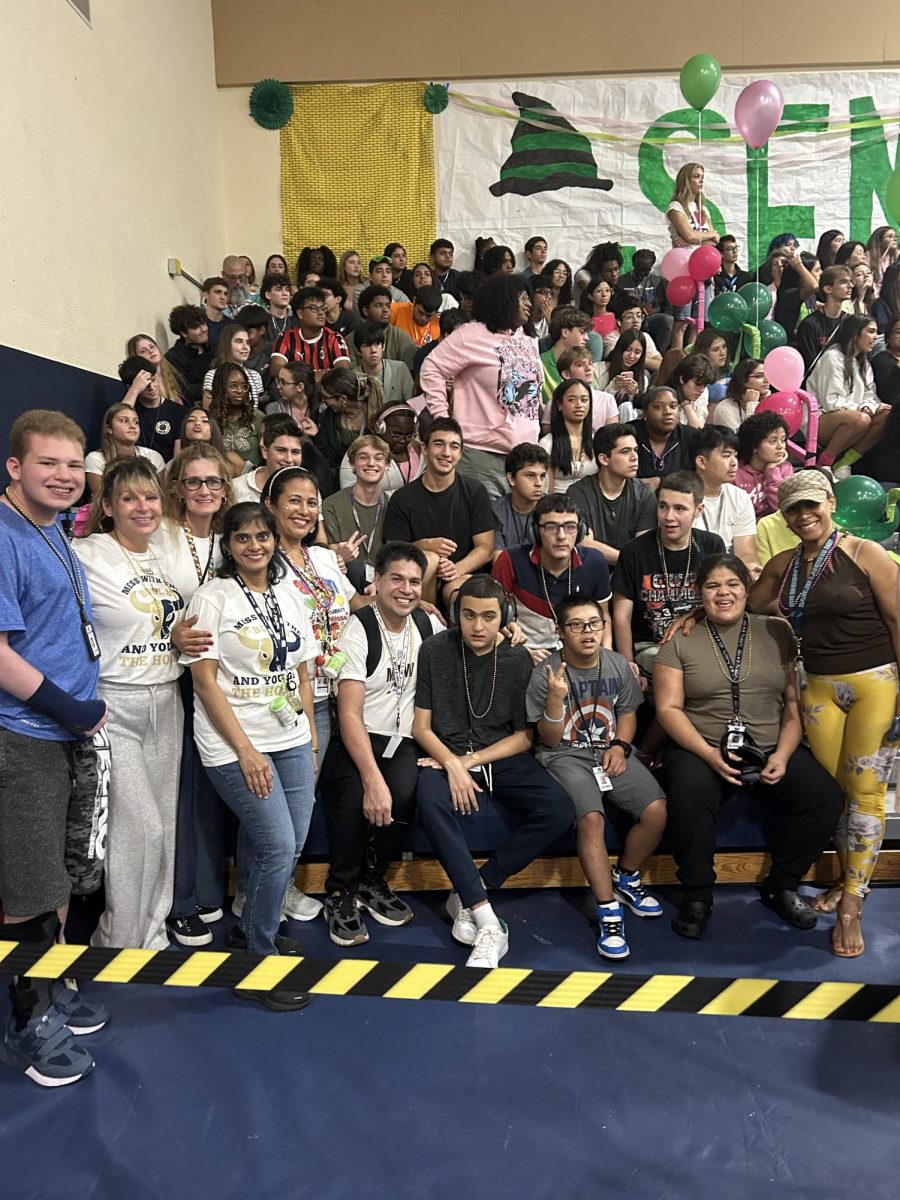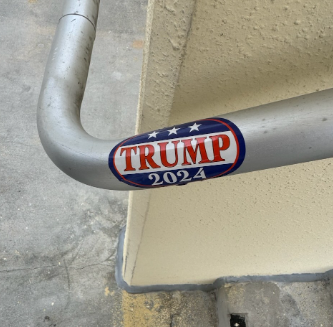
Bright, bold, blue and red. They’re hard to miss. A somewhat scenic route across the lunch crowds turned curious at the sight of yet another dutifully placed political sticker, plastered on our congested campus– bench, table, window alike. “(insert presidential candidate) 2024.” Whether peace or protest, why the sudden rush to propagate vehement partisanship and politics instead of proper policy? And what does this imply about our student body?
It’s not new to experience your fair share of political placating as a teenager, especially in the digital age with indefinite access to information and mass media, trolls and know-it-alls alike. The social divide between an apparent liberal versus conservative belief is arguably the most accepted chasm of public opinion in the modern American climate, though the power of media has shone a light on the implications of said polarization. Without getting too deep into the nitty-gritty of who stands where in any political sense, it’s apparent that political values among teenagers seem to be increasingly prevalent. In fact, the Institute of Politics at Harvard Kennedy School provides that, “Approximately half (53%) of young Americans indicate they will “definitely be voting” in the 2024 general election for president.”
But why? It’s apparent that teens are getting more involved in politics, but what’s the cause, the motivation, the drive? Social media. With increased connection comes increased knowledge of the world around us, and as the saying goes: ignorance is bliss.To keep things short, we know what’s going on more than our parents, and more than their parents in their adolescence. It’s a never-ending spiral of who’s doing what and what happened where in a 24/7 stream of impending infiniteness. The problem is that we’re constantly exposed to political misinformation and propaganda like never before. According to the Pew Research Center, “one in five Americans receive their daily intake of news from social media platforms,” contributing to the spread of misinformation. Misconceptions surrounding the reality of politics can lead to one-sided notions of our democracy, and a consistent confirmation bias when presented with facts. Regardless of party or candidate, it’s apparent that the divide between political sectors has increased, thus bringing forth a desire for defeat of an ‘opposing’ side, as if we don’t all live in the same country. In fact, Pew Research Center also provides that “The partisan identification of registered voters is now evenly split between the two major parties,” meaning that out of the millions of citizens in the USA today, almost all of the registered voters have, to put it simply, chosen a side.
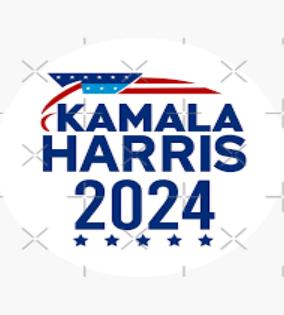
Although we as teenagers cannot vote yet, this increased polarization still affects us. The New York Times provides that, “Research shows that a voting generation is typically shaped for life by what happens politically in their teen years and early 20s,” and that Gen Z is, “a generation of soon-to-be voters who felt disillusioned by government and politics, and already hardened along political lines.” So basically, we care. A lot. And a lot of us are becoming increasingly one sided in our notions and beliefs within the American political sphere. While it’s certainly not a crime to have one’s own opinion, the danger lies in the lack of balance; talking AT one another, instead of WITH one another. The stickers serve a clear message: “Teenagers for _____.” Obviously not everyone agrees, but the stickers also don’t seem to serve any positive purpose. Although an opinion is heard, it’s not representative of the student body, nor the generation in which we exist.
More than anything, these stickers don’t seem to be leading to conducive connections among the student body. In fact, Diana H. Hess, researcher in and author of The Political Classroom: Evidence and Ethics in Democratic Education, provides that “difference often causes high emotions and often can cause breaches of civility.” That’s where the issue with these stickers lies: a seeming disregard for civility and decorum, and a borderline defacement of school property rather than collected, objective discourse in an open environment. The crude phrases on these stickers push certain ideologies onto other students in the hopes of advocating for political beliefs, which is understandable given the increase in youth participation in politics, however this method is at the expense of civility.
At the end of the day, coexistence is the goal. Elections will come and go, but we all still have to live together. As such, we have to leave room for meaningful conversations within our student body. Instead of masking pride as advocacy, we should make space for proper political discussions in a positive way.


